Vuelta a España 2014 Stage 3 details – the third stage of this year’s Vuelta is a 197.8 km hilly stage from Cádiz to Arcos de la Frontera.
This will be the third stage to take place in the Cadiz province. The beautiful capital of Cadiz will set the scene for the departure of the 197.8-km route that will take the peloton to the locality of Arcos de la Frontera. It is a flat stage until kilometer 55 where hills will appear. The peloton will face three 3rd category climbs before the final stretch towards Arcos. The final two kilometers, already in the locality of Arcos de la Frontera, will feature a climb that will prevent the entire group from arriving together.
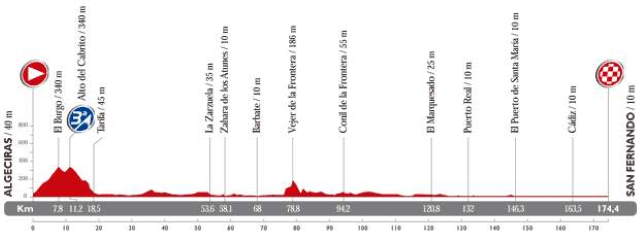
Previous stage: Vuelta a España 2014 Stage 2 Details
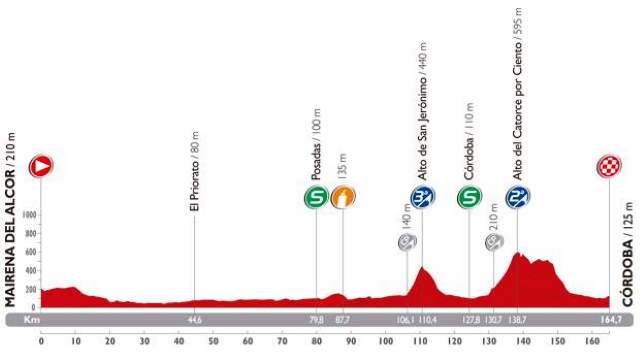
Next stage: Vuelta a España Stage 4 Details
Vuelta a España 2014 Stage 3 quick info
DATE August 25, 2014, Monday
STAGE TYPE Hilly
START-FINISH Cádiz (10 m) – Arcos de la Frontera (135 m)
LENGTH OF THE COURSE 197.8 km
Vuelta a España 2014 Stage 3 Profile
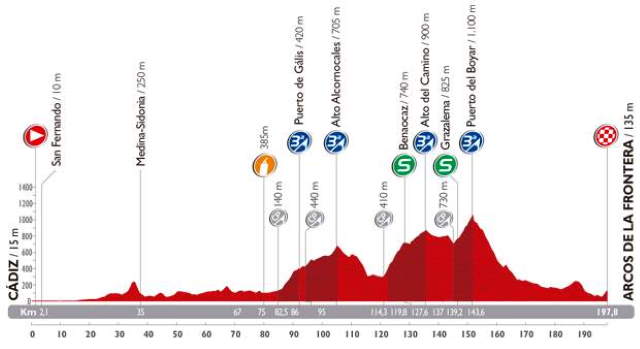
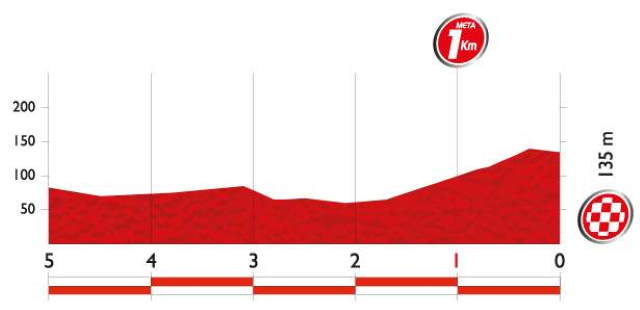
Vuelta a España 2014 Stage 3 start city: Cádiz
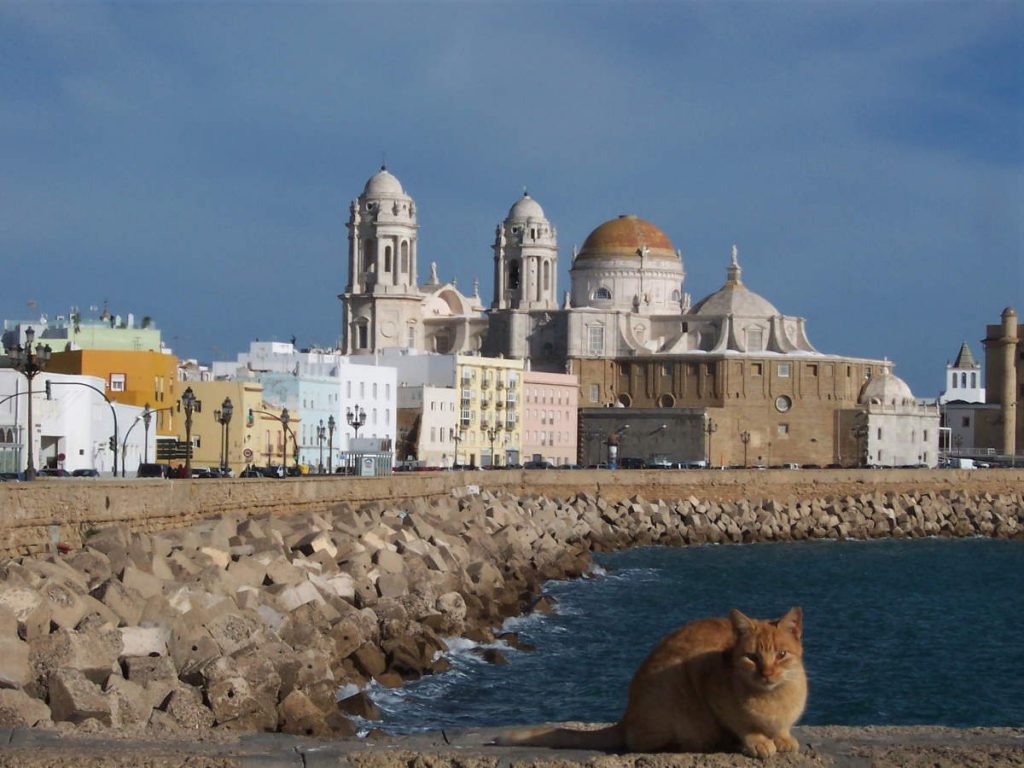
Vuelta a España 2014 Stage 3 start city, Cádiz is a city and port in southwestern Spain. It is the capital of Cádiz province, one of eight which makes up the autonomous community of Andalusia.
Cádiz, the oldest continuously-inhabited city in Spain and one of the oldest in southwestern Europe, has been a principal home port of the Spanish Navy since the accession of the Spanish Bourbons in the 18th century. The city is a member of the Most Ancient European Towns Network. It is also the site of the University of Cádiz.
Despite its unique site – on a narrow slice of land surrounded by the sea – Cádiz is, in most respects, a typically Andalusian city with a wealth of attractive vistas and well-preserved historical landmarks. The older part of Cádiz within the remnants of the city walls is commonly referred to as the Old Town (Spanish: Casco Antiguo). It is characterized by the antiquity of its various quarters (barrios), among them El Pópulo, La Viña, and Santa María, which present a marked contrast to the newer areas of town.
While the Old City’s street plan consists of narrow winding alleys connecting large plazas, newer areas of Cádiz typically have wide avenues and more modern buildings. In addition, the city is dotted with numerous parks where exotic plants flourish, including giant trees supposedly brought to Spain by Columbus from the New World.
Its fine white sandy beaches wrap around eight kilometres of city, validating their status as favourites. Cadiz is also a great location for sports, especially of the nautical kind, and for outdoor activities.
The sea leads the way along one of Cadiz’s most pleasant promenades: the Balcon de las Americas. It borders the city’s historical centre and is marked by historical buildings, observation towers and bastions that offer some of the best views.
The city’s historical center is a winding maze of charming streets and plazas that do not leave visitors indifferent, with two cathedrals, churches, palaces and a country house from the 17th and 18th centuries.
Other tourist attractions include gastronomy, commerce, and craftwork. Cadiz is well- known for its food: tapas, fresh fish and traditional stews come together with creative cuisine to be enjoyed in restaurants, bars, and terraces.
Vuelta a España 2014 Stage 3 finish town: Arcos de la Frontera
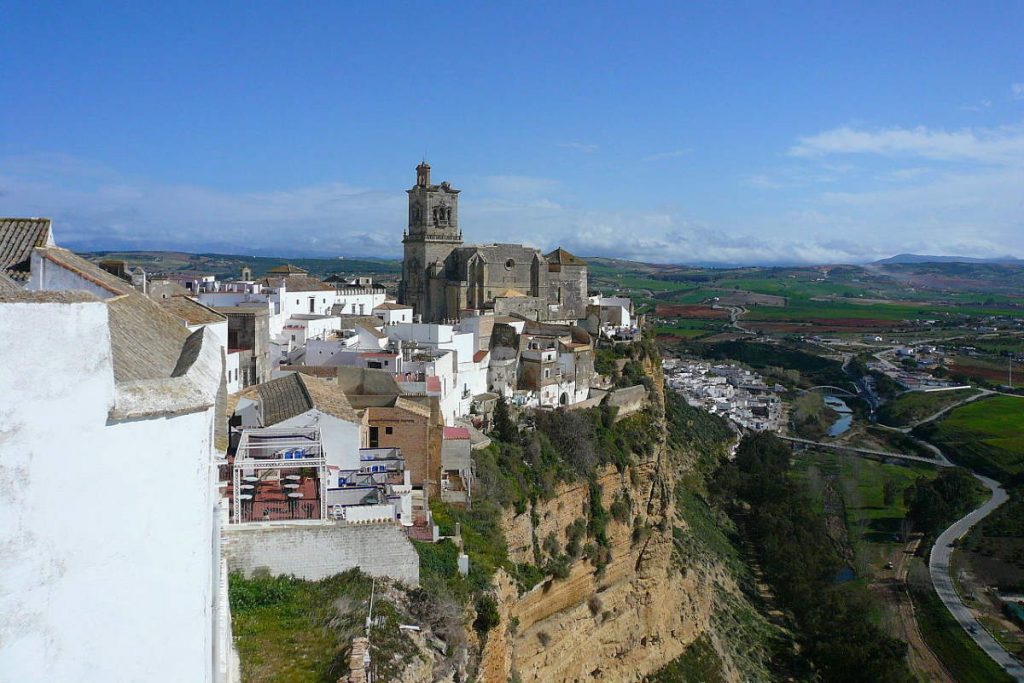
Vuelta a España 2014 Stage 3 finish town, Arcos de la Frontera is a town in the province of Cádiz in southern Spain. The city built atop a thousand-year-old rock declared a Natural Monument of Andalucia, that defies emptiness and the relentless passing of time. It is located on the eastern bank of the Guadalete River, which flows to the Bay of Cadiz. The town commands a fine vista atop a sandstone ridge, from which the peak of San Cristobal and the Guadalete Valley can be seen. The town gained its name by being the frontier of Spain’s 13th century battle with the Moors.
Main Sights
- Castillo de Arcos (15th-century castle)
- Iglesia Parroquial de Santa María de la Asunción, a church built between the 16th and 18th centuries
- Convent of San Agustín (16th-17th centuries)
- Church of San Pedro (16th-18th centuries)
- Ayuntamiento (seventeenth-century city hall)
- Iglesia de San Francisco (church built between the sixteenth and seventeenth centuries)
- Iglesia de la Caridad (church built between the sixteenth and seventeenth centuries)
Sources
- La Vuelta official website
- Cádiz on Wikipedia
- Arcos de la Frontera on Wikipedia

